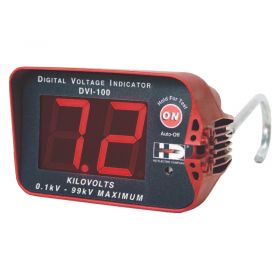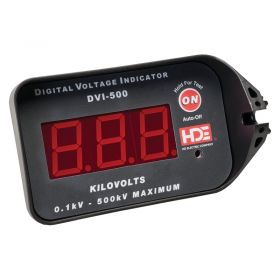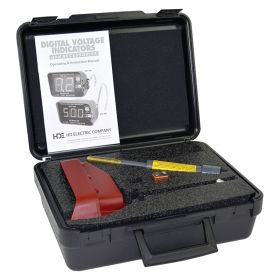High Voltage Indicators & Detectors

- Check for the absence of voltage
- Audible and visual indicators
- Suitable for overhead lines with voltages from 7.6 kV to 13.2 kV (line-to-ground)

- Available as a standalone instrument or as part of a range of kits
- Suitable for use on overhead and underground systems, as well as transmission systems up to 161kV
- Measure voltages between 0.1kV and 99kV line-to-ground

- Choose from a variety of kits (60Hz and 50Hz versions)
- Read the voltage of conductors up to 500kV line-to-ground
- Check overhead and underground distribution and transmission systems

- Available in a choice of kits (60Hz and 50Hz versions)
- Measure voltages on overhead, underground and transmissions systems, and at elbow test points
- Measure voltages between 0.1kV and 99kV line-to-ground

- Available in several kits (60Hz and 50Hz versions)
- Read the voltage of conductors up to 500kV line-to-ground
- Capacitive Test Point Mode: conduct measurements at elbow test points
About High Voltage Indicators & Detectors
The best warning for an electrician of a hot power line is a high-voltage indicator. Other devices relying on secondary power sources or subject to protective measures such as fuses can give false positive readings because they are not working as a direct result of the electricity in the lines. A high-voltage indicator is very simple and very effective.
Most high-voltage indicators are simple circuits. They consist of a connector attached to a bus bar in the supply cabinet, and a light-emitting diode inside of a small housing with a window to view the light. The LED may or may not flash, but its illumination lets an electrician know the line is powered and must be shut off before work.
A voltage detector is a device that determines the presence or absence of an electrical charge in an object. It can be a simple, pen-shaped piece of testing hardware that indicates the existence of electricity or an advanced tool that detects precise voltage levels in electrical systems.
A voltage detector measures the flux lines of the electric field formed between the earth's potential and a live component of the system.


